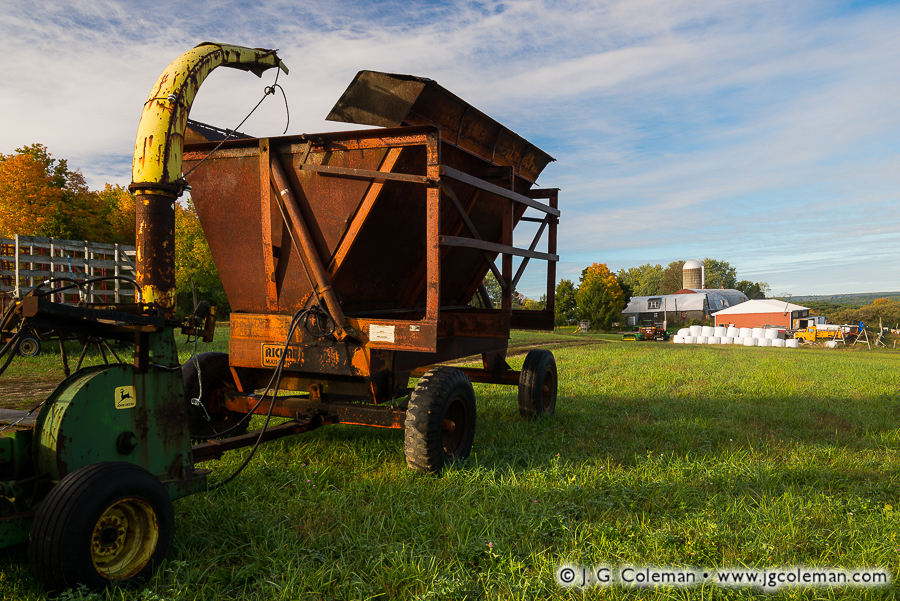
Forage harvester and dump wagon on hill beside barns, Watertown, Connecticut
© 2015 J. G. Coleman
Amidst the gentle hills of Watertown in Western Connecticut, the warm light of morning strikes a distant complex of barns flanked by bales of hay bound in white plastic. Quietly stationed on the hill nearby is a dump wagon and forage harvester, machinery that finds use in the autumn months when acres of spent cornstalks are cut, chipped and stored for use as wintertime livestock feed.
Most of us are familiar with hay as a staple of farm animals; we’ve all seen the round or rectangular bundles of dried grasses. But livestock is also fed “silage”, which is produced by harvesting hay, grains or chopped cornstalks and quickly storing them in an air-tight environment to ferment. Farmers in the north use this silage to provide their livestock with moist, nutritious feed even during a frigid winter when the fields are frozen over.
Traditionally, fermented feed was produced by storing fresh-cut greens in tall silos (thus the term “silage”), but advances in durable plastics have largely made silos obsolete in modern times. Farmers now have machinery which can wrap individual hay bales in plastic, essentially creating small, self-contained silos that are easy to access and transport. Similar plastic is used to cover silage that can’t be baled, such as chipped cornstalks, which are collected in long heaps on the ground and tightly covered.
Purchase a Fine Art Print or Inquire About Licensing
Click here to visit my landing page for “Yankee Farmlands № 40” to buy a beautiful fine art print or inquire about licensing this image.

